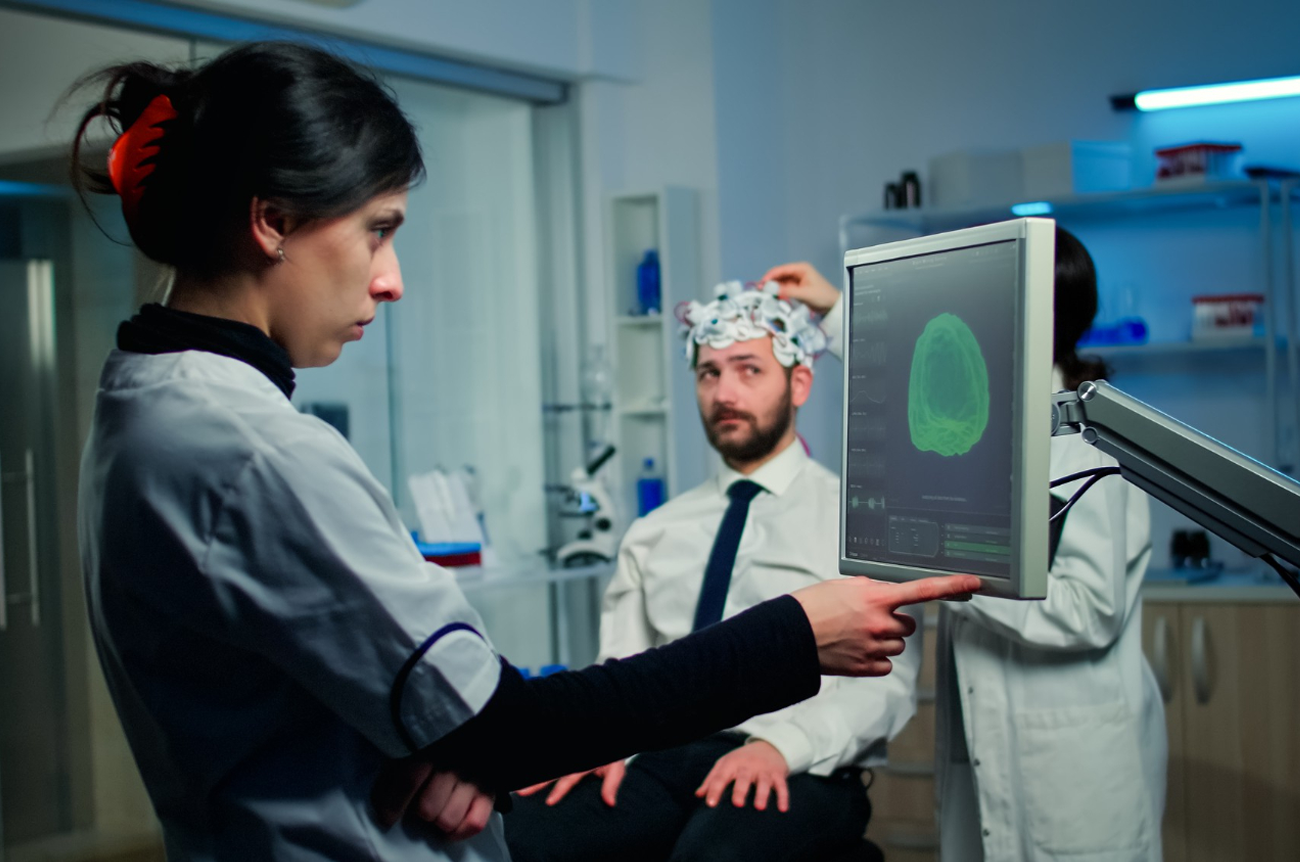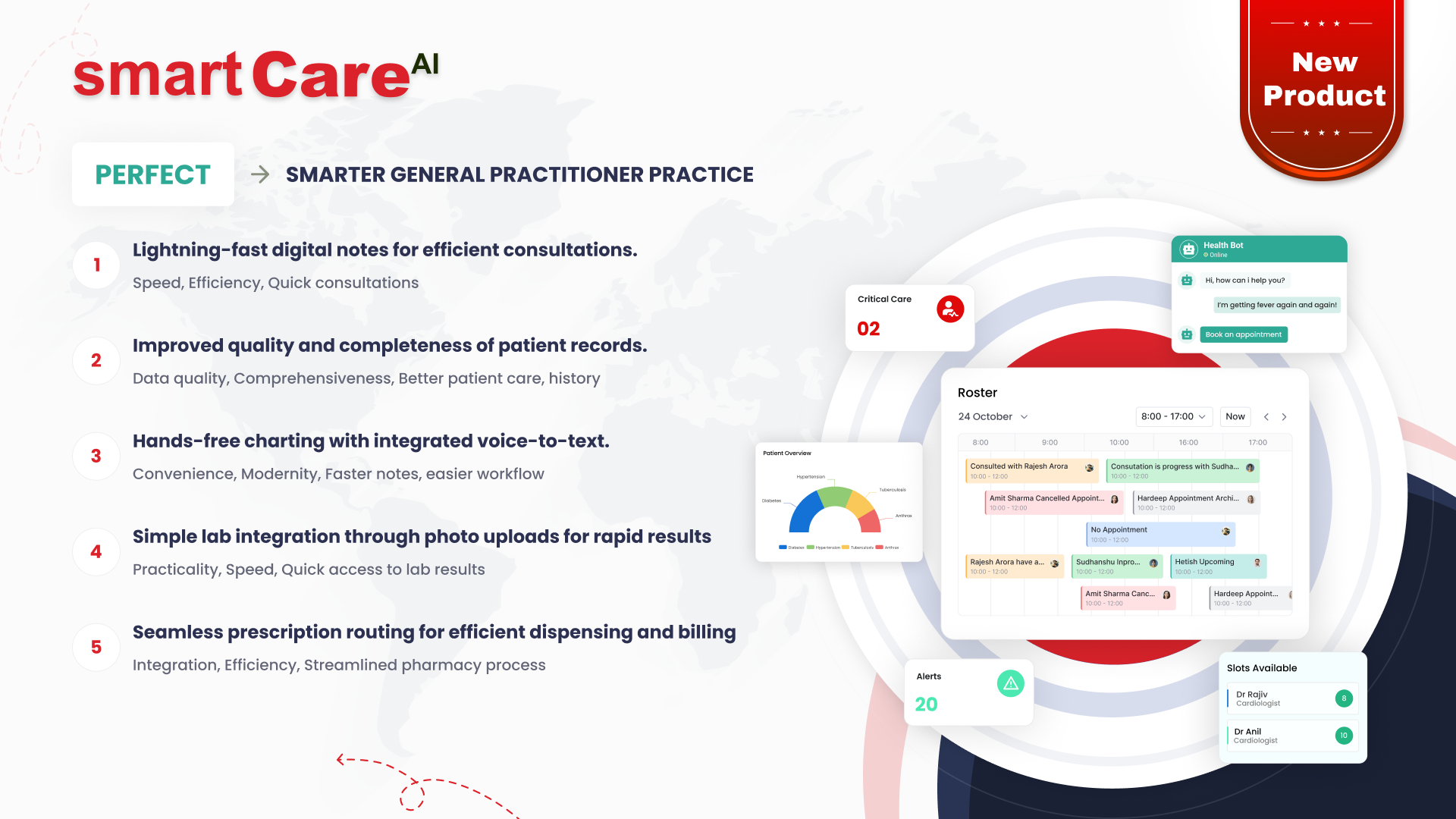
Posted On November 26, 2024
How Do AI and ML in Healthcare Software Help Reduce Medical Errors
Medical errors pose a significant challenge in healthcare, leading to adverse patient outcomes and increased costs. With the integration of artificial intelligence (AI) and machine learning (ML) into healthcare software, there is a growing potential to mitigate these errors and enhance patient safety. This blog explores how AI and ML technologies are instrumental in reducing medical errors within healthcare settings.
Understanding Medical Errors: The Scope of the Problem in Healthcare
Medical errors can occur at various stages of patient care, from diagnosis to treatment administration. According to estimates from the World Health Organization (WHO), tens of thousands of patients die each year due to preventable medical errors. These errors can arise from misdiagnosis, incorrect medication dosages, or lapses in communication among healthcare professionals. Addressing these issues is critical not only for improving patient outcomes but also for building trust in healthcare systems.
The Role of AI and ML in Enhancing Diagnostic Accuracy
AI and ML technologies have the potential to significantly enhance diagnostic accuracy. By analysing vast amounts of data, including medical histories, lab results, and imaging studies, these systems can identify patterns that may be missed by human clinicians. For example, AI algorithms can analyse radiology images to detect abnormalities such as tumours or fractures more accurately than traditional methods. This increased accuracy helps in reducing misdiagnoses, leading to timely and appropriate treatment for patients.
How Predictive Analytics Reduces Errors in Patient Care
Predictive analytics powered by AI and ML can forecast potential complications before they arise, allowing healthcare providers to intervene proactively. By analysing historical patient data, these systems can identify risk factors that may lead to medical errors, such as drug interactions or the likelihood of readmission. For instance, if a patient has a history of adverse reactions to a specific medication, the software can alert clinicians to consider alternative treatments. This proactive approach not only enhances patient safety but also streamlines care processes.
Streamlining Clinical Workflows: AI Solutions for Reducing Mistakes
AI technologies are also transforming clinical workflows by automating routine tasks and ensuring better data management. Electronic health records (EHRs) integrated with AI can automatically flag inconsistencies or missing information, prompting healthcare professionals to double-check critical data before making decisions. This automation helps reduce cognitive overload, allowing clinicians to focus on patient care rather than administrative tasks. Consequently, the likelihood of errors due to oversight decreases significantly.
Real-Time Decision Support: AI Tools that Aid Healthcare Professionals
Real-time decision support systems equipped with AI and ML algorithms provide healthcare professionals with evidence-based recommendations during patient encounters. For instance, AI can analyse a patient’s current symptoms against a database of clinical guidelines to suggest appropriate diagnostic tests or treatment plans. By providing timely and relevant information, these tools empower clinicians to make more informed decisions, reducing the chances of errors in treatment administration or diagnosis.
Leveraging Data to Identify Patterns and Prevent Errors
One of the most significant advantages of AI and ML is their ability to process vast amounts of data quickly and accurately. By analysing electronic health records (EHRs), treatment histories, and clinical notes, AI algorithms can identify patterns that may indicate potential errors. For instance, if a patient has multiple prescriptions that could interact negatively, AI can flag this issue for healthcare providers before it leads to a harmful situation.
Moreover, predictive analytics can help identify patients at higher risk of complications or errors based on their medical history and demographic information. By leveraging this data, healthcare providers can implement preventive measures, ensuring that the right interventions are applied at the right time.
AI-Powered Software: Improving Patient Safety and Outcomes
AI-powered software plays a vital role in enhancing patient safety. For example, tools that use natural language processing can help in understanding and interpreting unstructured data in clinical notes, which often contain critical information. By accurately capturing patient information, these tools can reduce miscommunication among healthcare providers, which is a common source of medical errors.
Additionally, AI applications can facilitate better decision-making. For instance, clinical decision support systems (CDSS) provide healthcare professionals with evidence-based recommendations tailored to individual patient scenarios. This helps ensure that treatment decisions are well-informed, ultimately improving patient outcomes.

Case Studies: Successful Implementations of AI in Reducing Errors
Several healthcare organisations have successfully implemented AI and ML technologies to reduce medical errors. For instance, a study published in the Journal of the American Medical Association highlighted the use of AI algorithms in radiology, which significantly reduced diagnostic errors. By automating the analysis of imaging data, the AI software could detect anomalies more accurately than human radiologists, leading to improved diagnostic accuracy.
Another example is a large hospital network that integrated AI-driven clinical decision support into their EHR system. By doing so, they reported a notable decrease in medication errors, as the system was able to cross-reference prescriptions with patient histories in real time, alerting pharmacists and doctors to potential discrepancies.
Training Healthcare Professionals to Use AI and ML Effectively
While AI and ML technologies can significantly reduce medical errors, the effectiveness of these tools largely depends on the training and preparedness of healthcare professionals. It is essential for staff to be familiar with the software and understand its capabilities and limitations.
Training programmes should focus not only on how to operate these systems but also on how to interpret the AI-generated insights and recommendations. By empowering healthcare professionals with the knowledge and skills to effectively utilise AI and ML tools, organisations can maximise the potential of these technologies in reducing medical errors.
The Future of Healthcare: How AI and ML Will Transform Error Reduction Strategies
As technology continues to advance, the role of AI and ML in healthcare will expand, offering even more sophisticated solutions for error reduction. Future innovations may include enhanced predictive analytics, improved user interfaces, and more robust integration with existing healthcare systems. These developments hold the promise of creating safer healthcare environments where medical errors become increasingly rare.
Moreover, as regulatory bodies and healthcare organisations adopt AI and ML technologies, standardisation and best practices will likely emerge, further enhancing the reliability and effectiveness of these tools in clinical settings.
Suggested Article: Why Should Healthcare Providers Prioritize Advanced Data, AI, and ML in Their Systems
Conclusion
The integration of AI and ML technologies into healthcare software presents a promising solution to reduce medical errors and enhance patient safety. From improving diagnostic accuracy to streamlining clinical workflows and providing real-time decision support, these technologies are revolutionising how healthcare providers approach patient care. As the healthcare industry continues to embrace these innovations, the potential for creating safer and more effective healthcare environments becomes increasingly attainable. By leveraging AI and ML, we can move towards a future where medical errors are significantly diminished, ensuring better outcomes for all patients.
For more information on how AI and ML can transform healthcare, visit SmartData Inc.
